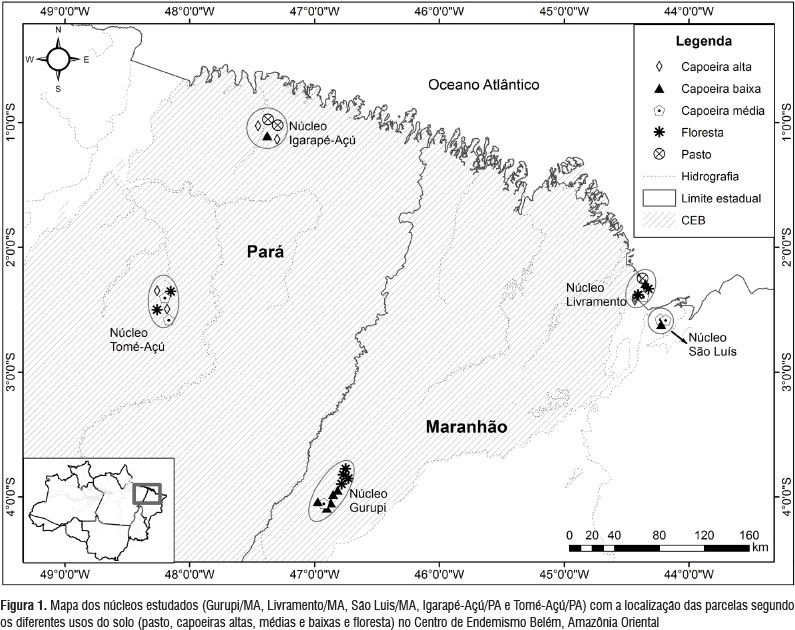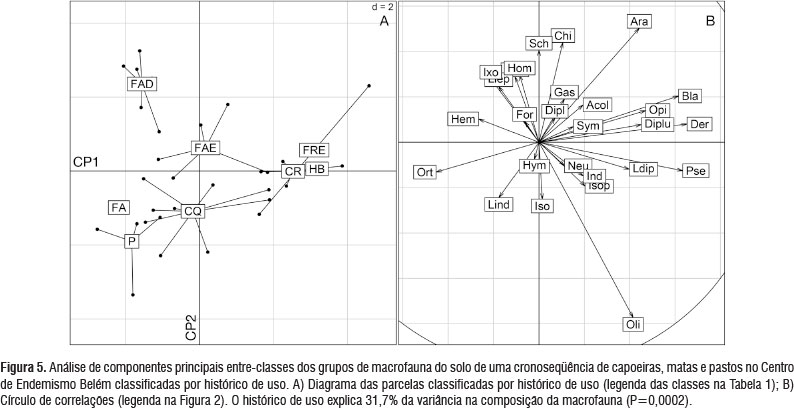The Belém Endemism Center (CEB; the biogeographic region located between the Tocantins and Pindaré rivers) is the most deforested area of the Amazon. To study the soil biota of the remaining old-growth and second-growth forests is essential to promote more sustainable farming practices, and provide orientation for degraded land restoration. The aim of this study was to identify the main determinants of the composition and diversity of major taxa of soil macrofauna (current soil use, geographic centers, soil use history, fire frequency) in a chronosequence of fallows and forests in the CEB. Macrofauna was sampled in eight sites of young secondary forests (4-7 y), six sites of medium secondary forests (11-15 y), seven sites of "old" secondary forests (20-40 y), eight sites of old-growth forest remnants and three sites of pastures. Its composition and diversity were analysed through Principal Component and Between-class Analyses. A total of 9.225 individuals from 29 major taxa (orders or families) were collected in the 32 plots. Soil macrofauna composition was very sensitive to soil use history and identified different communities among geographic centers. The intensity of soil use decreased the abundance and richness of predators, indicating long-lasting impacts of soil degradation on macrofauna composition and diversity, and therefore on soil ecological functions.
Bioindicator; Restoration; Soil management; Invertebrates











